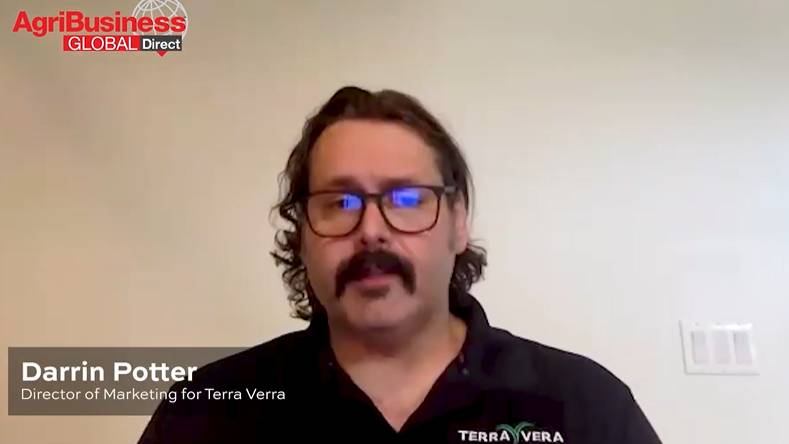Sales Volumes Rise Despite Global Value Decline
 At the AgriBusiness Global Trade Summit in Las Vegas last year, Kleffmann reported on a $60.5-billion crop protection market for harvest year 2014. This represented an increase of some 6% compared to the $57.2 billion value in harvest year 2013. While modest — as compared to the near double-digit growth registered in 2013 compared to 2012 — 6% represented a very enviable growth by many industry standards. As commented at the time, looking forward five years we will see this period as a boom time for crop protection companies.
At the AgriBusiness Global Trade Summit in Las Vegas last year, Kleffmann reported on a $60.5-billion crop protection market for harvest year 2014. This represented an increase of some 6% compared to the $57.2 billion value in harvest year 2013. While modest — as compared to the near double-digit growth registered in 2013 compared to 2012 — 6% represented a very enviable growth by many industry standards. As commented at the time, looking forward five years we will see this period as a boom time for crop protection companies.
Now one year on the industry is very much looking back with rose-colored glasses at what were the good old times and wondering when this cyclic pesticide market will once again recover.
That 2015 was a tough year for the industry is without question. In nominal terms the global market for crop protection chemicals declined by some 9.8% to $54.6 billion as measured at ex-company level. 2015 was also the first year that the market declined this decade and brought to an end a five-year period of growth. It is not, however, the only agriculture related industry that suffered; a similar decline was also felt within the seed industry, and sales of new tractors — a good barometer of the health of general farm economy — fell by about 15% in many key markets. In 2015 for the first year ever, the global area planted of biotech crops also declined fractionally & while it will undoubtedly return to growth in the future, it does bring to an end close to 20 years of continual growth.
Besides the impact of external factors such as currency headwinds and emerging market instability, significantly lower commodity prices, credit availability, variable weather patterns including the impact of the current El Niño weather phenomenon have also contributed to this slowdown. Not so well documented is the effect of farmer buying patterns downgrading purchases to cheaper off-patent alternatives as the squeeze on farm incomes tightens. Under such economic conditions it is no surprise that the crop protection market declined 10%; but as ever the devil is in the detail. If we strip out the effect of currency movement and express the market in constant currency (2014) then in fact the reverse is true, and the market saw an increase of close to 5%; or looking at it another way volume increased by 5%.
Summing up the “key drivers” of this $55-billion industry can be daunting.
If you take into account the dynamics of several hundred companies all with different strategies, then close to 100 countries with pesticide sales in excess of $50 million, close to 1,000 different chemical active ingredients and, at last count around about 10,000 unique brands on a global basis, then this is not at all surprising. In Orlando we will consolidate those key drivers into those that are
either industry, market, regulatory or technology related.
 A good example of an industry related driver is going on right in front of our eyes as we speak. In light of the three proposed mergers within the top six companies, then new opportunities will arise for the second and third-tier companies. Mega mergers in the past have not resulted in 1+1 equals 2, and those smaller companies with an eye for detail will be able to pick up on fall out opportunities, either directly or indirectly. It is also clear that in 2016 we are at a pinnacle of products losing their patent protection. Never before (and probably never again) will there be such a number of active ingredients coming off patent. From here on, the number to choose from goes down, as the 17-year (on average) patent protection now coincides with the peak of new active ingredient introductions 17 years ago. Everyone is suddenly interested in 20-year-old-plus molecules, both generic and multinationals alike.
A good example of an industry related driver is going on right in front of our eyes as we speak. In light of the three proposed mergers within the top six companies, then new opportunities will arise for the second and third-tier companies. Mega mergers in the past have not resulted in 1+1 equals 2, and those smaller companies with an eye for detail will be able to pick up on fall out opportunities, either directly or indirectly. It is also clear that in 2016 we are at a pinnacle of products losing their patent protection. Never before (and probably never again) will there be such a number of active ingredients coming off patent. From here on, the number to choose from goes down, as the 17-year (on average) patent protection now coincides with the peak of new active ingredient introductions 17 years ago. Everyone is suddenly interested in 20-year-old-plus molecules, both generic and multinationals alike.
Market-related drivers remain very much related to the declining commodity prices and direct impact on grower spend per hectare. What everyone wants to know is when this decline with be reversed, given that all the fundamentals for improvement are in place. Some recent improvement in commodity prices in corn and rice at the time of writing may be reversed shortly.
If looking at regulatory related drivers and impact on the market then the continual saga of the EU refusal to re-register glyphosate (even on an interim basis; again at the time of writing) is significant. Besides glyphosate, many key molecules are also facing restrictions on the basis of potential endocrine disruption or environmental impact issues. The banning of AS paraquat this year in China is another example of many countries removing older products from the market, even where no real suitable alternative exists.
Even with the decline of new active ingredients, the industry remains technology driven, and changing technology continues to shape the industry. Rather than new molecules, however, the new battleground is in formulation technology and it is this area in which many of the second- and third-tier companies are excelling.
The talk at Orlando will discuss the factors listed above among others; which if the first six months of 2016 are anything to go by will once again change by August 17th to 19th.
Author’s note: Kleffmann’s analysis is based on data collected from farmer surveys, interviews with distributors in emerging markets, proprietary market trend studies, subject matter experts, and open-source information. The farmer surveys continue to provide the bulk of the data for our analysis although our program of trend studies is becoming more significant. Trend studies allow for a comprehensive examination of many smaller but fast growing markets, particularly those in African. Many trend-study countries will become the next group of farmer-surveys countries as companies better understand their growth potential.






